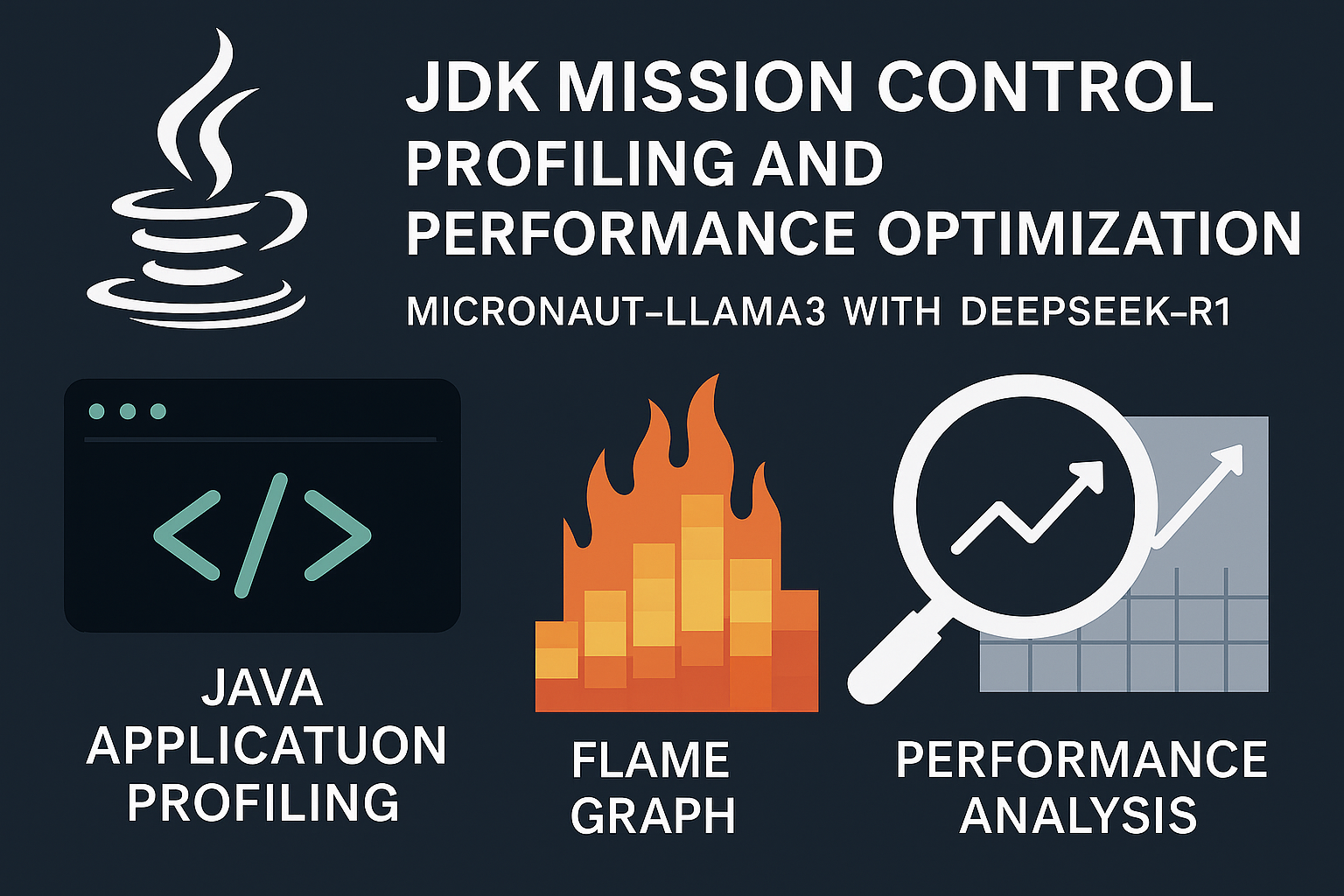In this blog post, I explore the capabilities of JDK Mission Control , a powerful tool for low-overhead performance analysis and diagnostics of Java applications.
If you’ve read my previous post , you’ll know that I have been using DeepSeek extensively. However, with the increasing popularity of DeepSeek, I have noticed a degradation in service performance, as reflected in the DeepSeek status . To mitigate this, I have switched to Perplexity Pro a complimentary service offered to Singtel customers. For those without access to this, an alternative is Google AI Studio . Having an AI pair programmer significantly enhances the troubleshooting process.
Setting up JMC
To begin, download and install JMC from the official JMC 9.0.0 downloads page .
As part of my ongoing work, I aimed to optimize the inference performance of Micronaut-Llama3 to support Unsloth’s DeepSeek-R1 . Since DeepSeek-R1 only supports Q4 and Q8 quantization for the Llama architecture, I opted for the Q8_0 model.
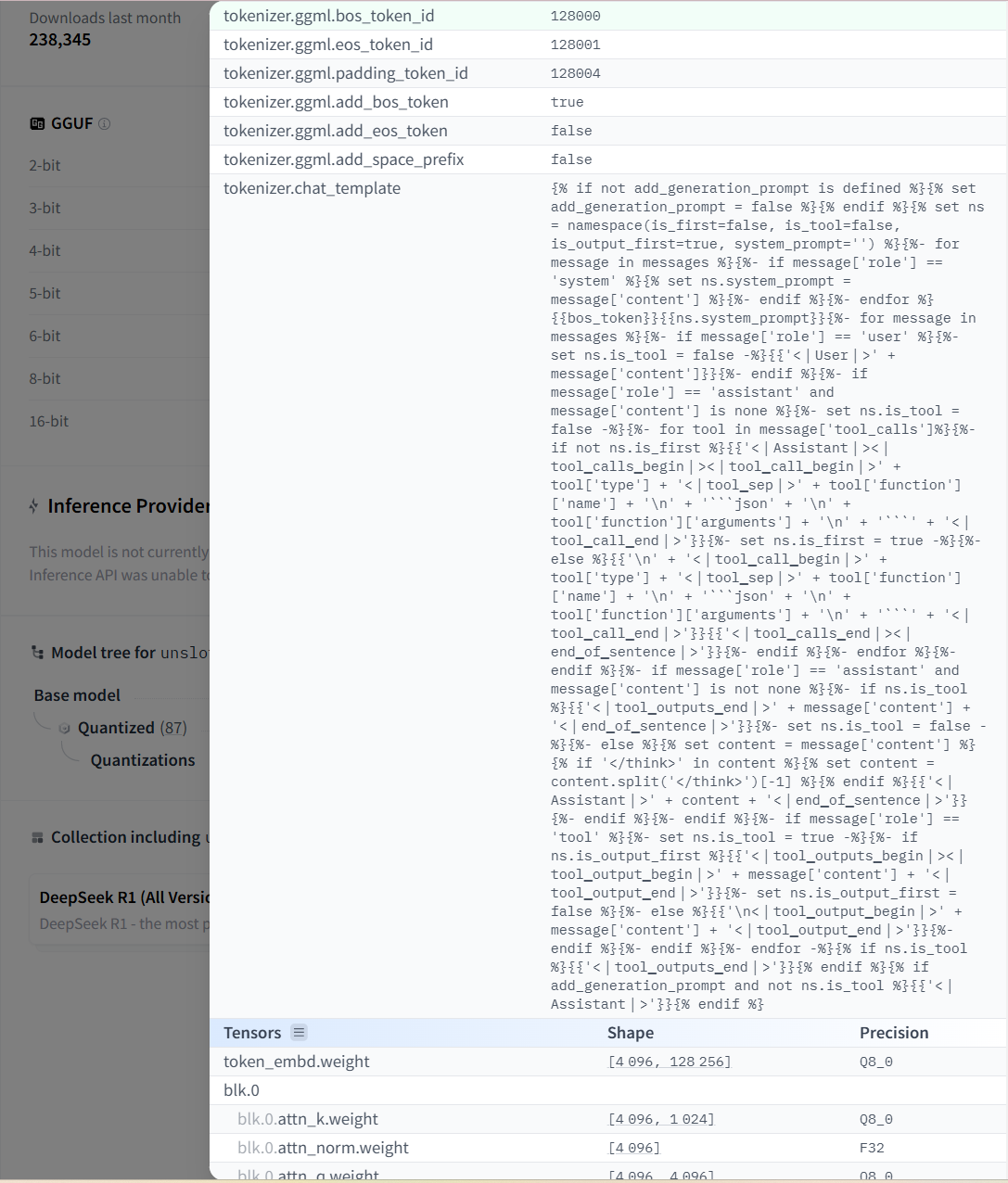
To integrate support for this model, I made the following modifications:
Changes to micronaut/model/ChatFormat.java:
public ChatFormat(Tokenizer tokenizer) {
this.tokenizer = tokenizer;
Map<String, Integer> specialTokens = this.tokenizer.getSpecialTokens();
specialTokens.putIfAbsent("<|begin_of_text|>", 128000); // for DeepSeek-R1
specialTokens.putIfAbsent("<|end_of_text|>", 128001); // for DeepSeek-R1
this.beginOfText = getRequiredToken(specialTokens, "<|begin_of_text|>");
this.startHeader = getRequiredToken(specialTokens, "<|start_header_id|>");
this.endHeader = getRequiredToken(specialTokens, "<|end_header_id|>");
this.endOfTurn = getRequiredToken(specialTokens, "<|eot_id|>");
this.endOfText = getRequiredToken(specialTokens, "<|end_of_text|>");
this.endOfMessage = specialTokens.getOrDefault("<|eom_id|>", -1); // only in 3.1
this.stopTokens = Set.of(endOfText, endOfTurn);
}Changes to micronaut/model/Tokenizer.java:
public Tokenizer(Vocabulary vocabulary, List<Pair<Integer, Integer>> merges, String regexPattern,
Map<String, Integer> specialTokens) {
specialTokens.putIfAbsent("<|begin_of_text|>", 128000); // for DeepSeek-R1
specialTokens.putIfAbsent("<|end_of_text|>", 128001); // for DeepSeek-R1
this.vocabulary = vocabulary;
this.compiledPattern = regexPattern != null ? Pattern.compile(regexPattern) : null;
this.specialTokens = new HashMap<>(specialTokens);
this.merges = new HashMap<>();
for (Pair<Integer, Integer> pair : merges) {
int firstIndex = pair.first();
int secondIndex = pair.second();
int mergeIndex = vocabulary.getIndex(vocabulary.get(firstIndex) + vocabulary.get(secondIndex))
.orElseThrow();
this.merges.put(pair, mergeIndex);
}
}
...
public String decode(List<Integer> tokens) {
String decoded = decodeImpl(tokens);
// Replace the original decodedBytesAsInts with the below
int[] decodedBytesAsInts = decoded.codePoints()
.map(cp -> {
Integer decodedByte = BYTE_DECODER.get(cp);
if (decodedByte == null) {
return (int) '?';
}
return decodedByte;
})
.toArray();
byte[] rawBytes = new byte[decodedBytesAsInts.length];
for (int i = 0; i < decoded.length(); i++) {
rawBytes[i] = (byte) decodedBytesAsInts[i];
}
return new String(rawBytes, StandardCharsets.UTF_8);
}Profiling with JMC
To start profiling, simply initiate the Flight Recorder, as shown below:
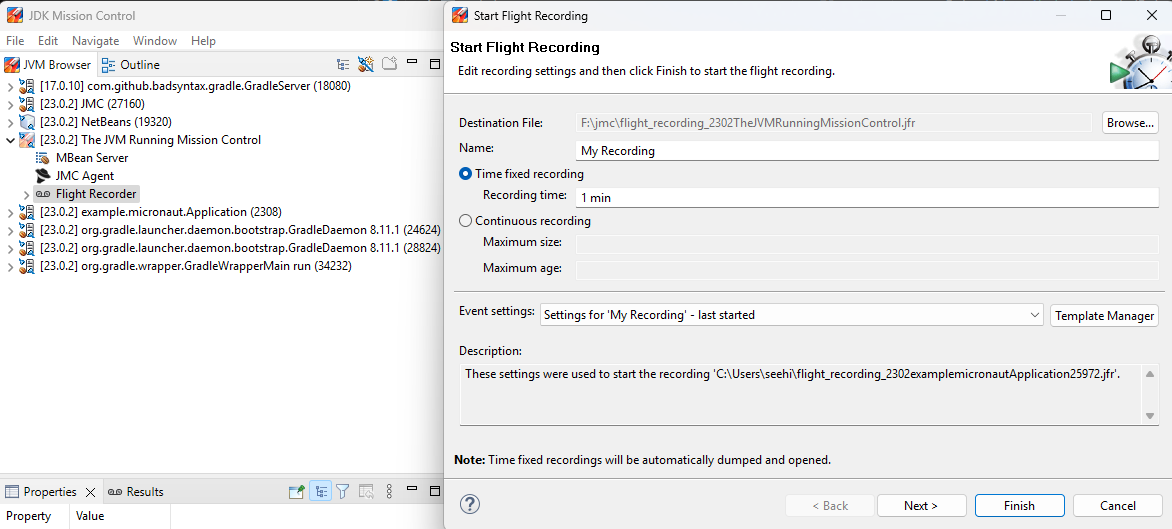
Referencing the Llama3.java post , I ran the application using:
gradlew runConfiguration in application.properties:
micronaut.application.name=llama3
micronaut.server.port=8888
llama.BatchSize=32
llama.VectorBitSize=512
llama.PreloadGGUF=DeepSeek-R1-Distill-Llama-8B-Q8_0.gguf
options.model_path=DeepSeek-R1-Distill-Llama-8B-Q8_0.gguf
options.temperature=0.1f
options.topp=0.95f
options.seed=42
options.max_tokens=512
options.stream=true
options.echo=true
options.fullResponseStream=trueTest URL:
http://localhost:8888/api/llama3/generate?prompt=Why%20is%20the%20sky%20blue?The profiling results are as follows:
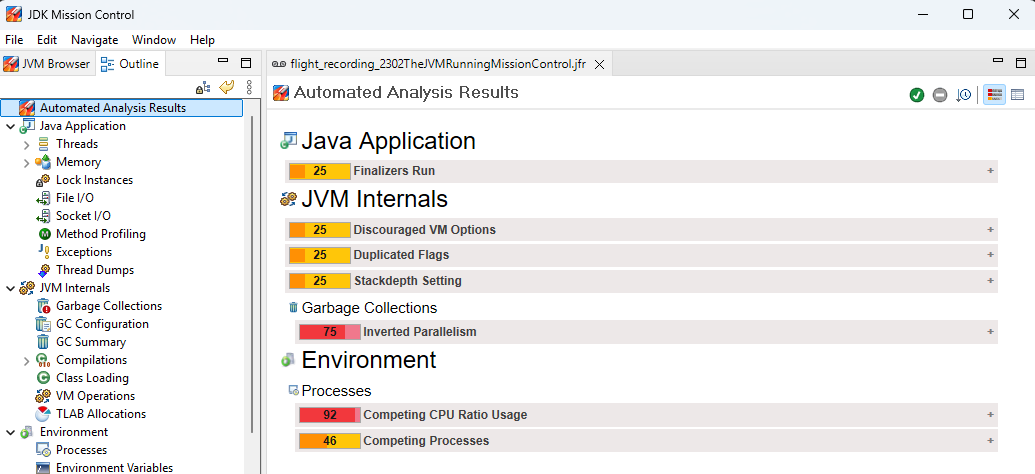
Performance Optimization: ByteVector Operations
The flame graph analysis highlighted ByteVector operations as an optimization opportunity:
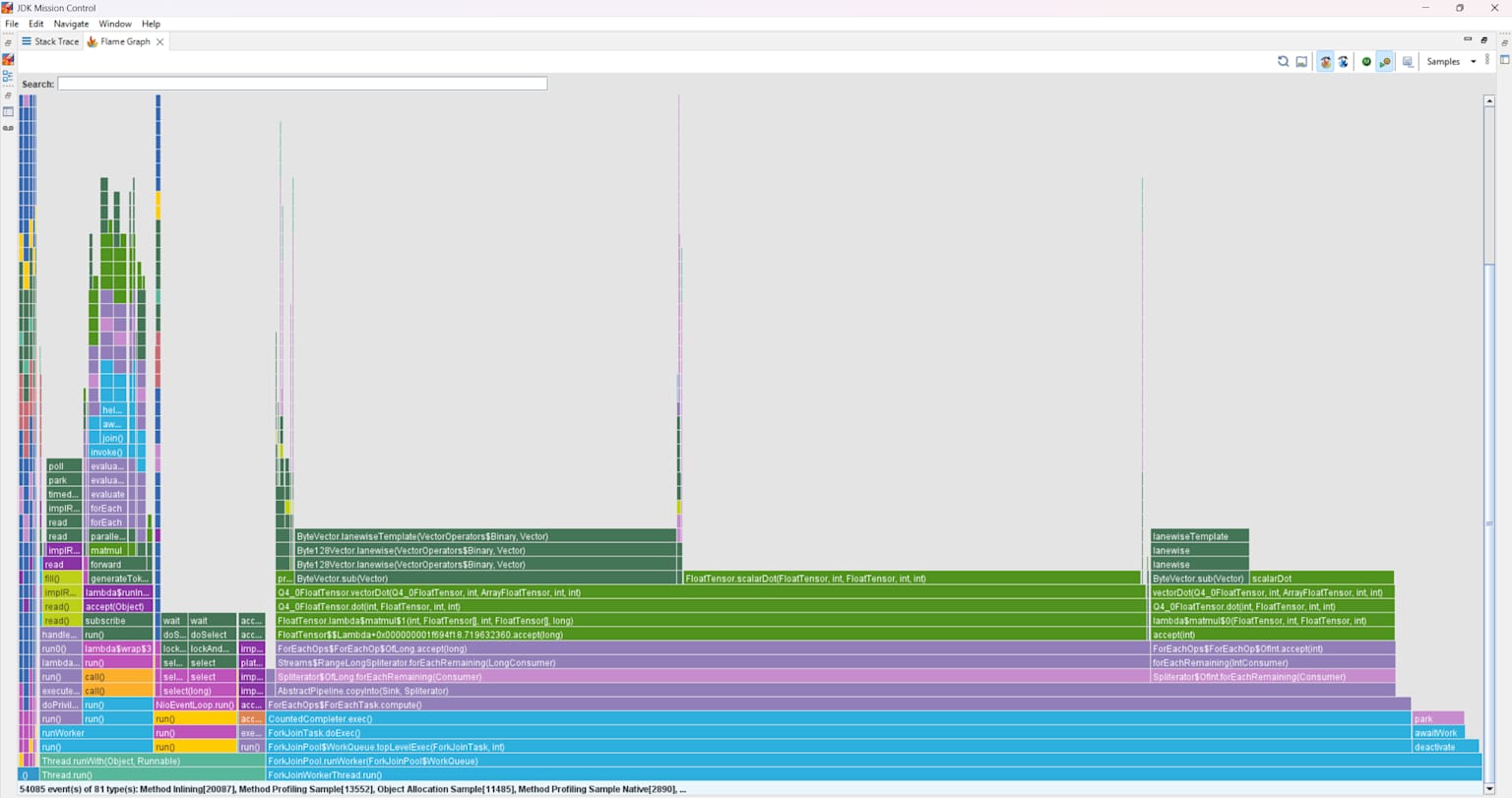
Optimized code snippet:
// Instead of separate operations
ByteVector loBytes = wBytes.and(MASK_LOW).sub(OFFSET_8);
ByteVector hiBytes = wBytes.lanewise(VectorOperators.LSHR, 4).sub(OFFSET_8);
// Combine operations
ByteVector loBytes = wBytes.and(MASK_LOW);
ByteVector hiBytes = wBytes.lanewise(VectorOperators.LSHR, 4).and(MASK_LOW);
ByteVector combined = loBytes.blend(hiBytes.lanewise(VectorOperators.LSHL, 4), BLEND_MASK);JMC vs. VisualVM: A Comparative Analysis
JMC offers a more sophisticated and efficient profiling experience, making it a preferred tool for optimizing Java applications at scale.
| Feature | VisualVM | JDK Mission Control (JMC) |
|---|---|---|
| Ease of Use | Simple, user-friendly | Advanced, steeper learning curve |
| Performance Overhead | Higher | Lower |
| Flame Graphs | Requires plugins | Built-in |
| Data Granularity | Basic monitoring data | Detailed, in-depth insights |
| Best Use Case | General debugging & profiling | Low-overhead, enterprise-grade profiling |
| Data Collection Method | JMX | Java Flight Recorder (JFR) |
By leveraging JMC, I was able to identify and optimize key performance bottlenecks in my project. If you’re working with Java applications that require in-depth profiling, JMC is a must-have tool.
Stay tuned for more insights on optimizing Java applications!
